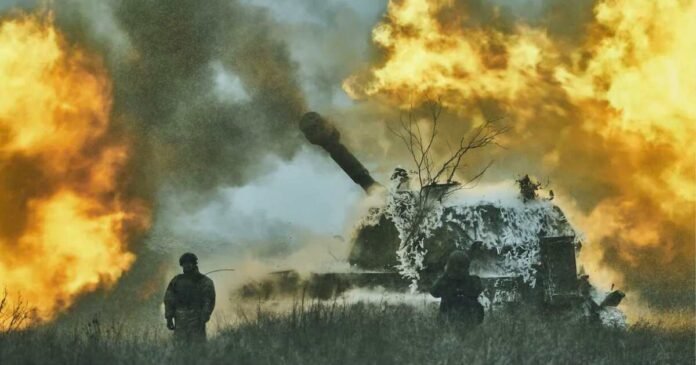Kyiv: Widespread devastation in Ukraine, with ravaged forests, flooded towns, and deceased dolphins, marks the grim aftermath of nearly two years of war, evolving into an “enormous” environmental tragedy, according to experts. The invasion’s impact on nature has been particularly severe, as highlighted by Doug Weir, head of research at the Conflict and Environment Observatory, a British NGO. The conflict in Ukraine, unlike localized battles, spans an “incredibly long” front line, stretching across hundreds of kilometers, with relentless fighting.
The environmental toll extends beyond direct combat, encompassing intense artillery fire and heightened pollution resulting from frequent attacks on energy infrastructure. Bombing in urban areas has generated vast amounts of debris, further contributing to the environmental crisis. Doug Weir emphasized, “The environment has been massively a victim of this war.”
In November, the estimated environmental cost soared to a staggering $56 billion, as reported by Jaco Cilliers, resident representative of the United Nations Development Programme (UNDP) in Ukraine. He described the scale of the tragedy as enormous, underlining the far-reaching consequences that will impact generations to come.
War’s Toll on Ukraine’s Forests, Parks, and Marine Life
In the eastern part of the country, where the conflict has been exceptionally intense, a 300-year-old oak forest faced total destruction due to the war, revealed Bohdan Vykhor, director of the environmental group WWF-Ukraine. Ukraine’s Minister for Environmental Protection and Natural Resources, Ruslan Strilets, informed AFP that approximately 30 percent of forests and 20 percent of national parks have been impacted by the ongoing fighting.
The road to recovery for these natural habitats could span decades, and experts acknowledge that determining the full extent of the damage may take years. A significant challenge is that large portions of Ukraine remain inaccessible to environmental experts, either due to Russian occupation or proximity to the front line. Remote approximations based on satellite data or social media images become essential for scientists, making the overall picture incomplete, as noted by Doug Weir.
The Black Sea has also become a significant battleground, making it impossible to accurately assess the number of dolphins killed. While officially registering a thousand dolphin deaths, many found beached after being disoriented by military sounds, Strilets acknowledged that experts believe the real number could be in the “tens of thousands.” The environmental impact on Ukraine is profound and underscores the challenges in comprehending the full scope of the tragedy.
Unseen Consequences
Amid the well-known destruction, such as the Kakhovka dam explosion causing deadly flooding in southern Ukraine over the summer, Yehor Hrynyk from the Ukrainian Nature Conservation Group is concerned about less visible effects. The expensive war may lead the government to exploit natural resources, like logging, as battles are won by armies, and wars are won by economies, according to Strilets. He assures that economic recovery won’t come at the expense of the environment.
Communicating the environmental message during bombings is challenging. Hrynyk notes the difficulty in capturing attention amid the chaos. Many delay environmental concerns until after the war, stating, “We need to come back to it after the war ends.” Weir responds that the environment is vital for basic needs like air, food, and water. Cilliers emphasizes the need to grasp the enduring implications of environmental destruction, affecting generations and extending beyond Ukraine’s borders. Even for activists like Hrynyk, supporting the army in defending Ukraine remains the top priority.
